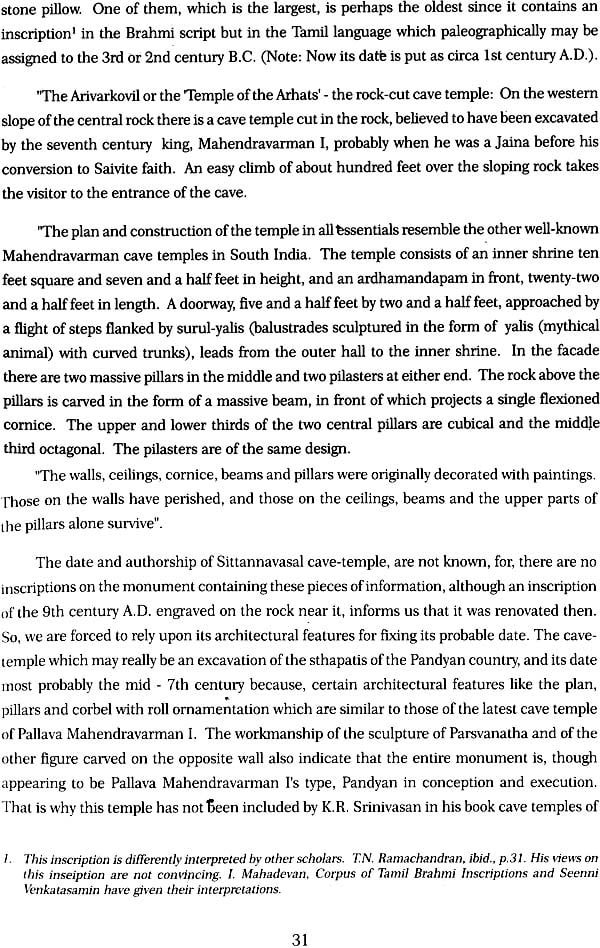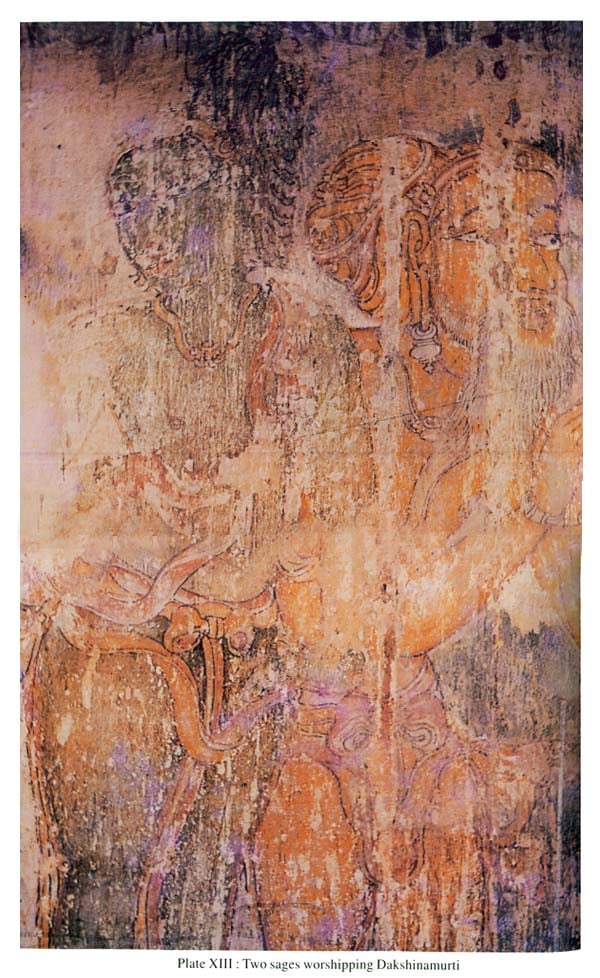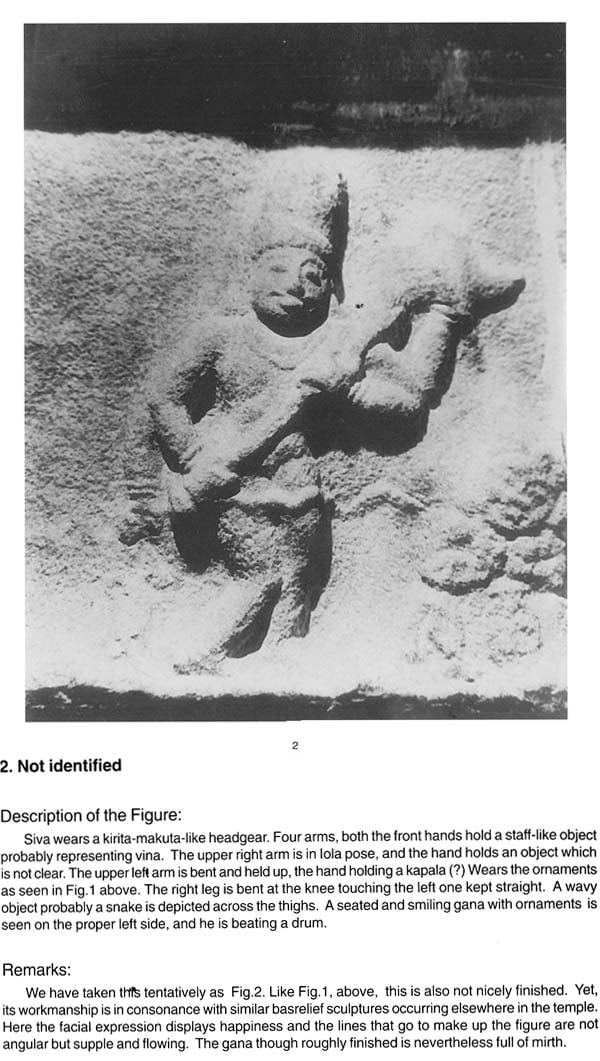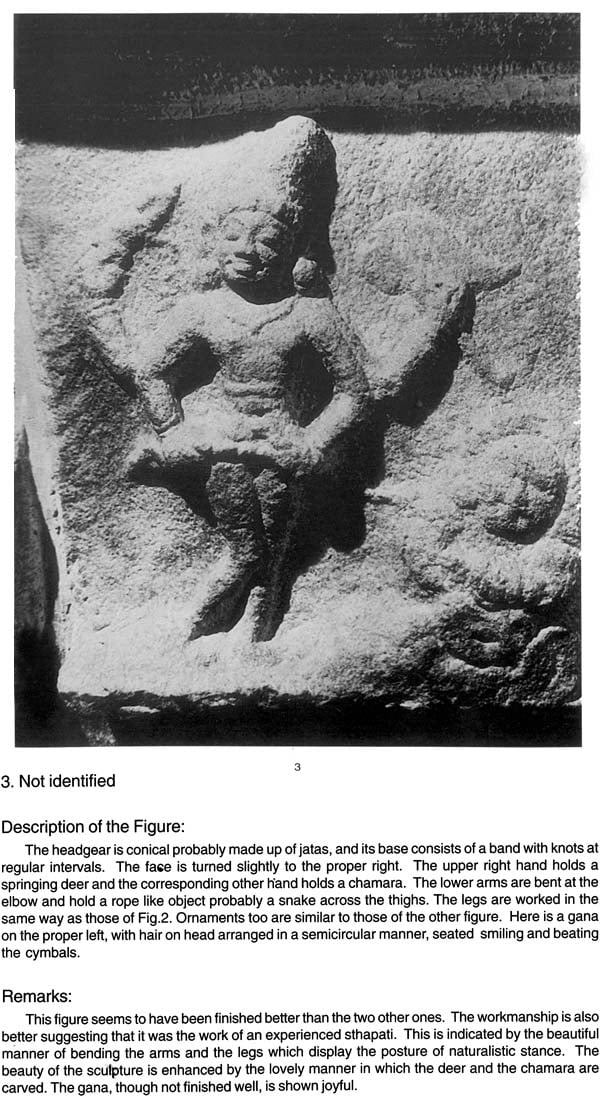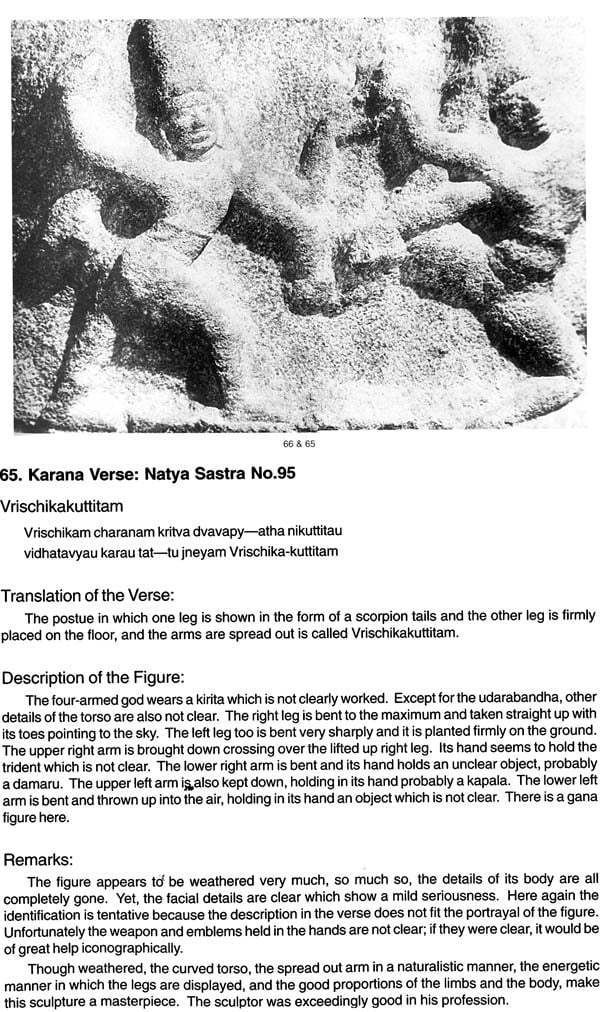
Magnificent Mural Paintings: Sittannavasal Panamalai Tanjavur Early Chola (Karana Sculptures of Tamilnadu)
Book Specification
| Item Code: | NAN052 |
| Author: | C. Nachippan |
| Publisher: | Kalakshetra Publications, Chennai |
| Language: | English |
| Edition: | 2004 |
| Pages: | 202 (Throughout Color and B/W Illustrations) |
| Cover: | Hardcover |
| Other Details | 14.5 inch x 9.5 inch |
| Weight | 1.50 kg |
Book Description
Tamil Nadu, one of the southern states of India, has hundreds of temples, which are treasure houses of arts and crafts. Many of them have mural paintings depicting scenes from epics and Puranas. These date as far back as 7th century A.D. to 18th century A.D. The remnants of one of the best examples can be seen at Chittannavasal near Puthukkottai (7th C, A.D.). The most admirable and well known murals at the Brahadeeshwarar temple at Tanjavur Belonging to the Chola period, that is, 10th century A.D., where discovered in the first half of the 20th century by chance, when cleaning the murals from the 18th century belonging to the Maratha rulers. The Chola paintings have eventually been restored. These paintings depict a few important scenes from the legend of Lord Siva and the court of the Chola Emperor Raja Raja I.
This book contains reproductions of the Chola Murals in detail photographed by C.T. Nachiappan in the 1950s and give us an idea of the creative skill of the artists of the ancient Tamil Nadu. One also gets to see reproductions of Chittannavasal and Panamalai Murals.
The Tanjavur temple also houses 81 of the 108 karanas of Bharatha Natyam portrayed insculpure; these also have been captured in photographs by Nachiappan and included in this book.
The Brihadisvarar temple at Tanjavur, also known as the Periya Koil (Big Temple), is an outstanding example of the Dravidian temple architecture. One might say that the architectural excellence had reached its pinnacle in this temple. It is difficult to imagine how in those days over a thousand years ago that a structure of such monumental dimensions and technical excellence could be erected.
The Big Temple is exemplary not only in architecture, it epitomizes the art of painting too. The murals around the sanctum sanctorum of Lord Siva or Brihadisvara are a testimony to the artistic sensibilities and skill of the people of the Chola empire and the patronage of King Raja Raja I. These murals cover four walls- two side walls and the rear wall divided into two sections- these were discovered sometime during the 1930s while examining the Nayak paintings, which had been painted over the earlier Chola creations; Sri T.N. Ramachandran, Joint Director General of the Archeological Survey of India wanted these to be photographed; he also had plans to write a book on the heritage of Tanjavur.
The efforts by the photographers of the Archeological survey of India were not successful, because it was not an easy task to cover a wall of 8ft X 14ft with a clearance in front of only about 7-8ft. The results of their efforts gave a distorted version of the paintings. Then Sri T.N. Ramachandran approached me and asked if I could undertake the work. I agreed.
On our way to the temple to examine the murals, we chanced upon some beautiful 13th century Chola bronzes being fished out of well nearby and kept at the treasury; they were a lovely Bikshatana and a set of sculptures of Kumarasambhavam. With the green lichen of oxidation covering them they were an unforgettable sight and example of the technical expertise of the Chola sculptors.
After examining the paintings on the wall I gave a quotation of Rs. 10,000 for the work, including the cost of construction of a special steel ladder designed by me. The surface of the walls, on which the painting was found, was divided into a number of squares; each square was photographed separately and put together without the fine dividing line being seen in the final transparencies. The camera was mounted on a certain level on the ladder so that the focus would not be affected when photographing the squares at that level; a sensor fixed by me also would make sure that the focusing was proper.. It was quite a tedious and painstaking job, but that was the only way it could be done, if the entire painting were to be photographed without distortions. I had set up a processing laboratory there itself at the exhibition room to check the work at every step. I used to geo to Madras frequently to process the pictures and make sure that I could proceed further. It took me a month to complete the work. I used a Linhof camera 5”x 4”.
There was no scanning facility those days. It had to be done with only a graphic arts camera and had to be sent to Saraswathy Press in Calcutta; but the technicians there had exposed the transparency too long under powerful light and burnt the films. Fortunately I had a set of transparencies for my own record, which I have been preserving carefully. Meanwhile Sri Ramachandran had completed his work on the paintings and his manuscript was being processed for publication. But unfortunately, when the publication was half-way through, he passed away. All these happened almost 50 years ago.
Meanwhile I decided to publish a book with the photographs of the paintings I had zealously preserved all these year. The modern technology has made it possible to get excellent reproductions. I myself sat along with the compositor technician and did the colour corrections, wherever the colours might have faded.
Professor P.R. Srinivasan, a reputed scholar in Indian Art History and Epigraphy, has written the text. The paintings depict the episodes from the legends of Lord Siva Dakshinamoorthi, Nataraja, Tripuranthaka, and the story of Sundaramoorthi Nayanar. In the reproductions containing the entire scene it would not be possible to see the details; but there are separate pictures of details. To give a comparison of the Chola murals, the book also contains reproductions of photographs taken by me of the early Pandya murals in the Jaina cave-temple at Sittannavasal and the early Pallava murals in the Talagiriswarar temple at Panamalai.
While cleaning the painted chambers before photographing the murals, a series of relief sculptures of 81 Bharatanatya Karanas, discovered earlier on the wall of the corridor of the first floor of the garbhagribha was also photographed by me. These sculptures are also included in this present book. Some of them were also published in the book ‘Nataraja’ by Sivaramamurthi.
| 1 | Introduction | |
| 2 | List of Colour Plates | |
| 3 | List of Illustrations : black and white | |
| 4 | Pandimandalam Paintings Early Pandyan Period- Sittannavasal Paintings description of the Paintings | |
| 5 | Tondaimandalam Paintings Early Pallava Period- Panamalai Paintings | |
| 6 | Cholamandalam Paintings Early Chola Period- Tanjavur Paintings | |
| 7 | The paintings in the Rajarajesvaram temple | |
| 8 | Dakshinamurti: Chamber No. 5 | |
| 9 | Sundaramurti Nayanar Story: Chamber No. 7 | |
| 10 | Raja Raja I and Karuvur Devar | |
| 11 | Nataraja | |
| 12 | Tripurantaka panel | |
| 13 | Thanjavur Rajarajesvaram Temple Unique Bharata Natya Karana Sculptures |

